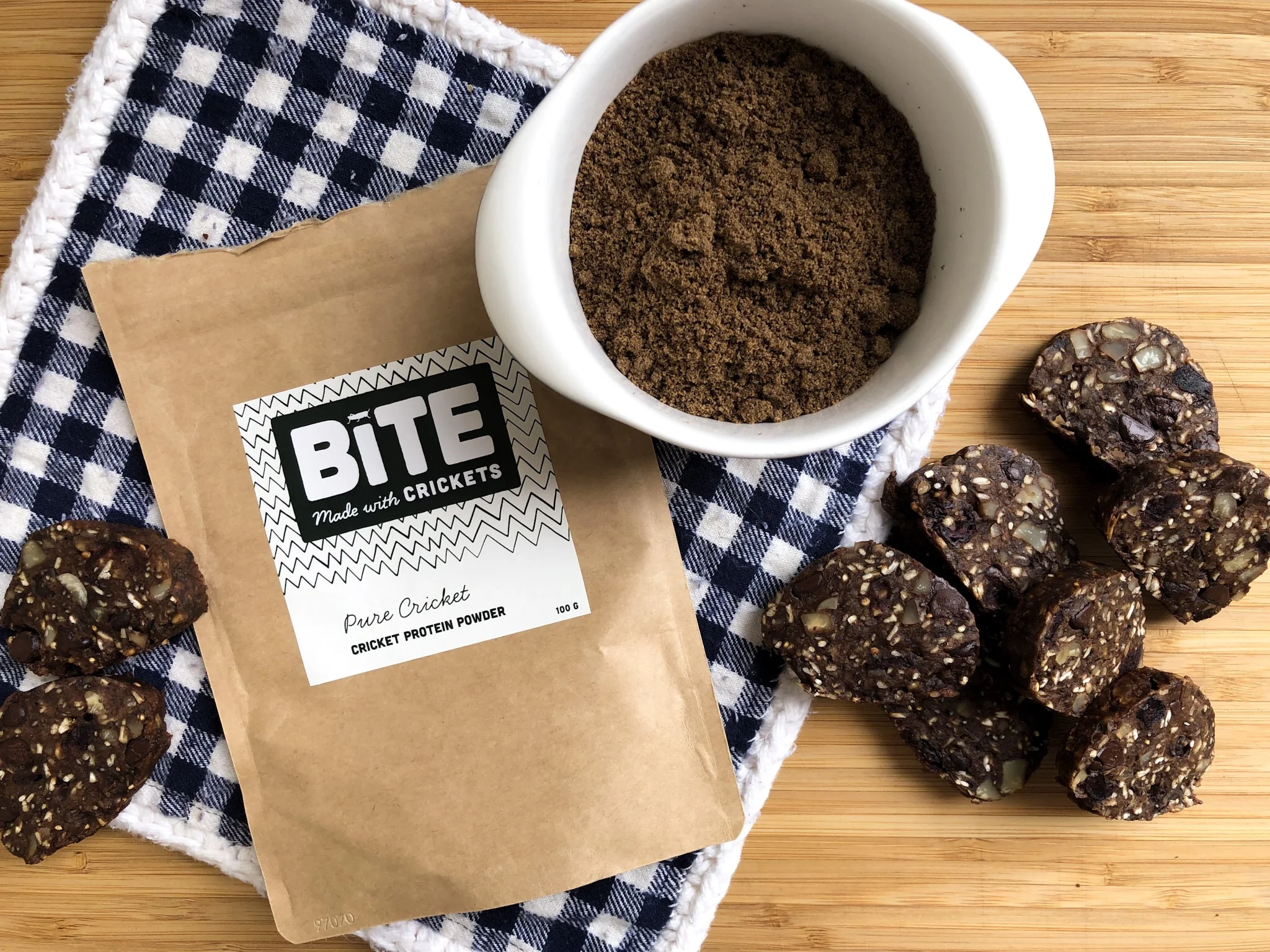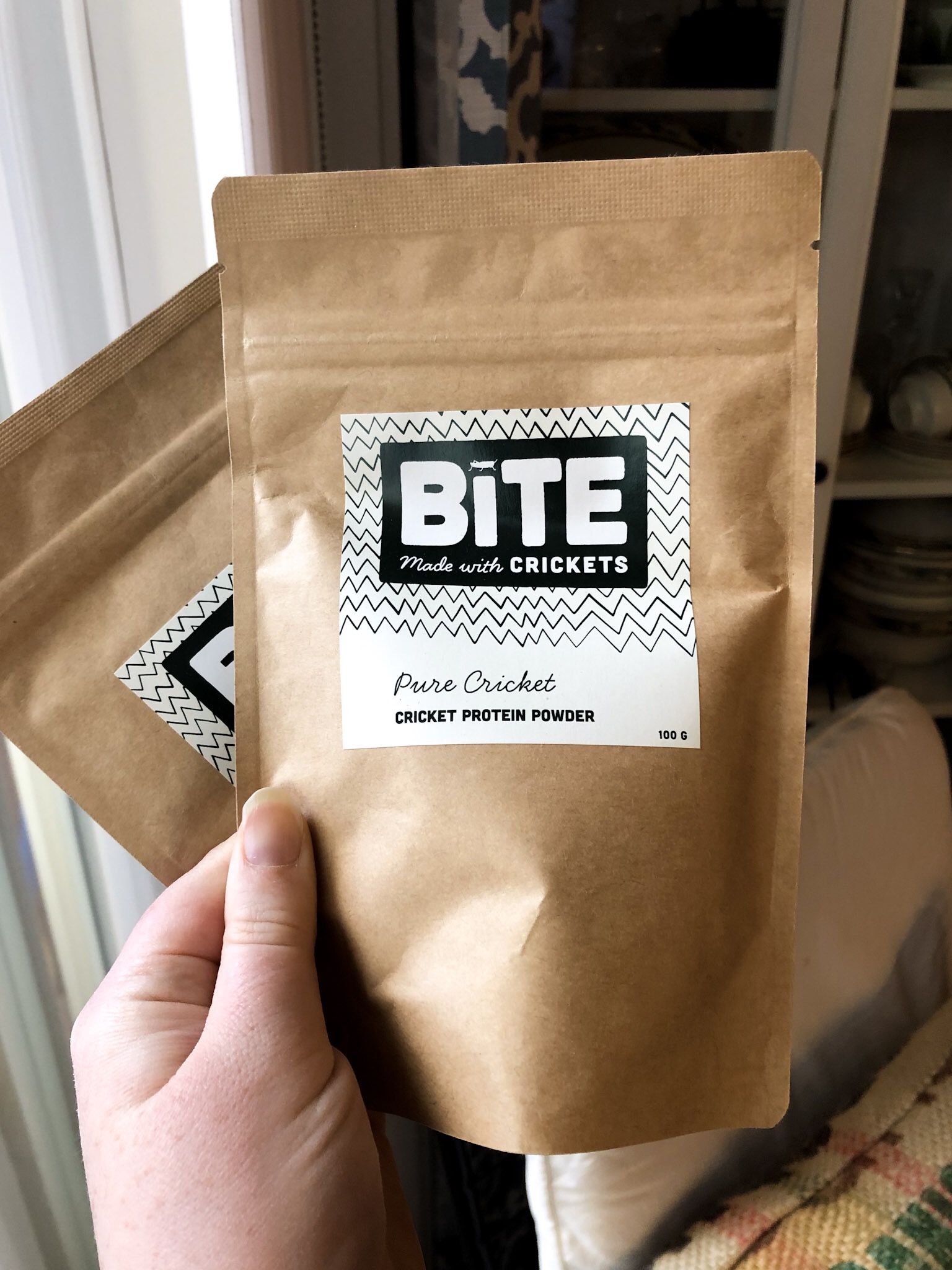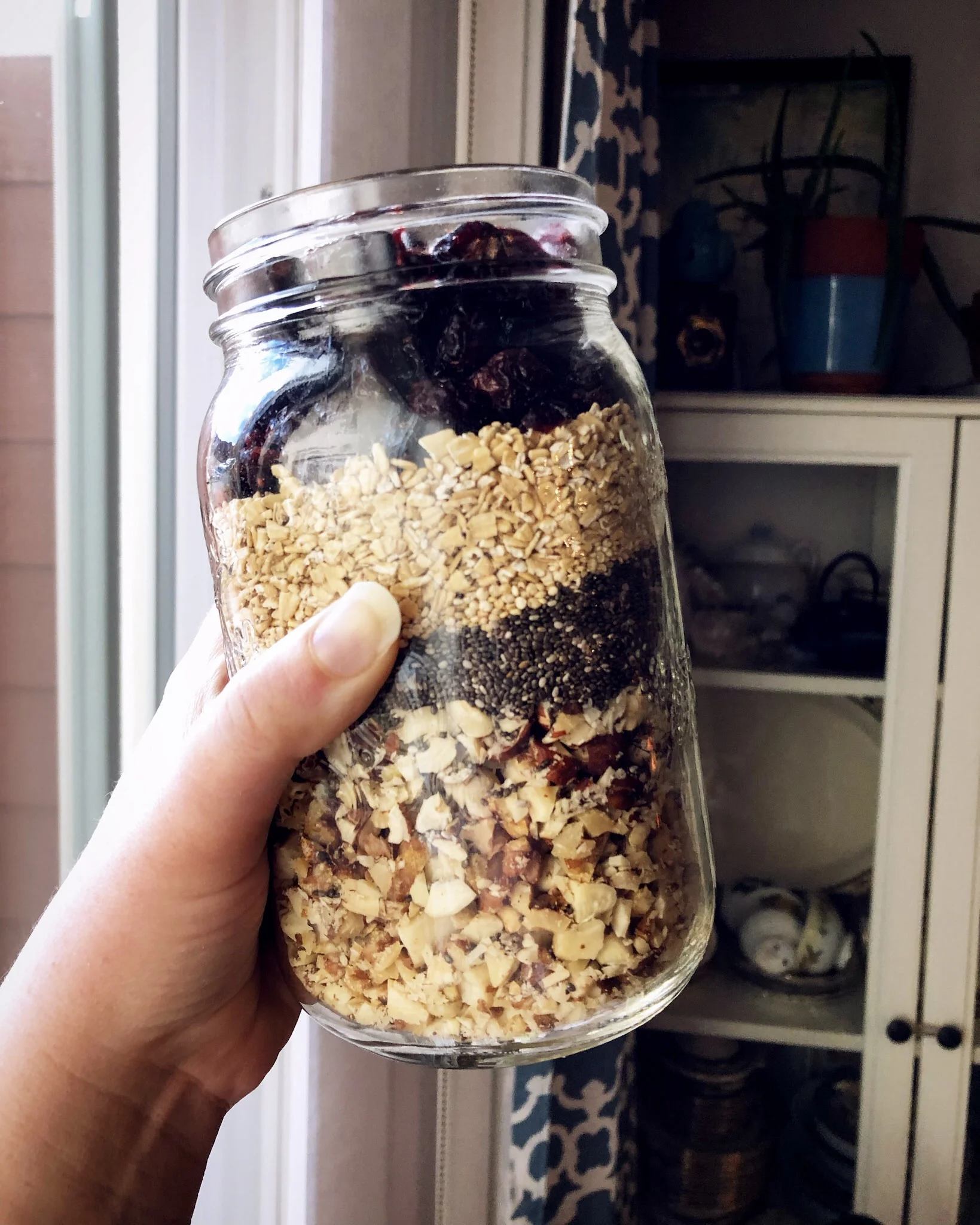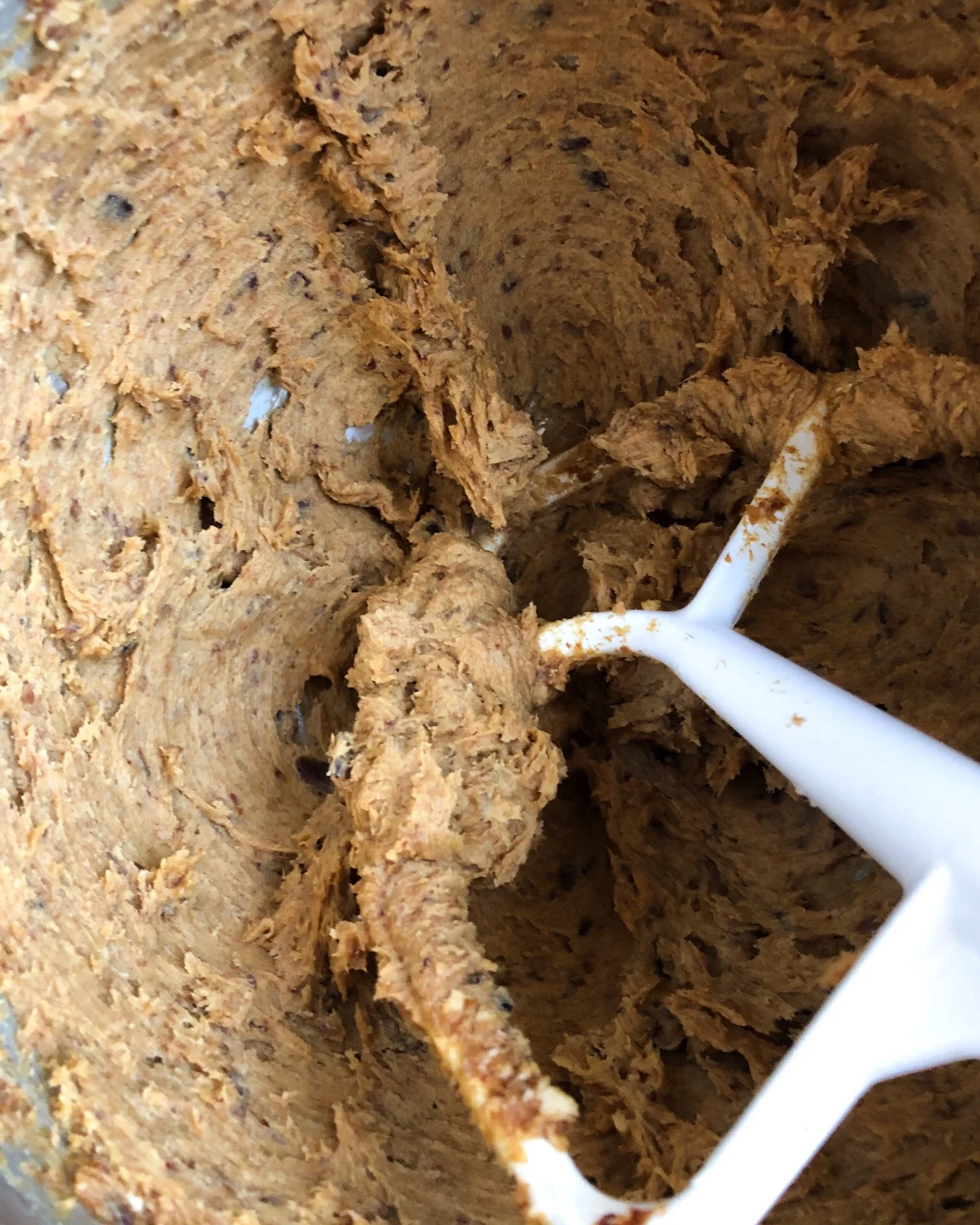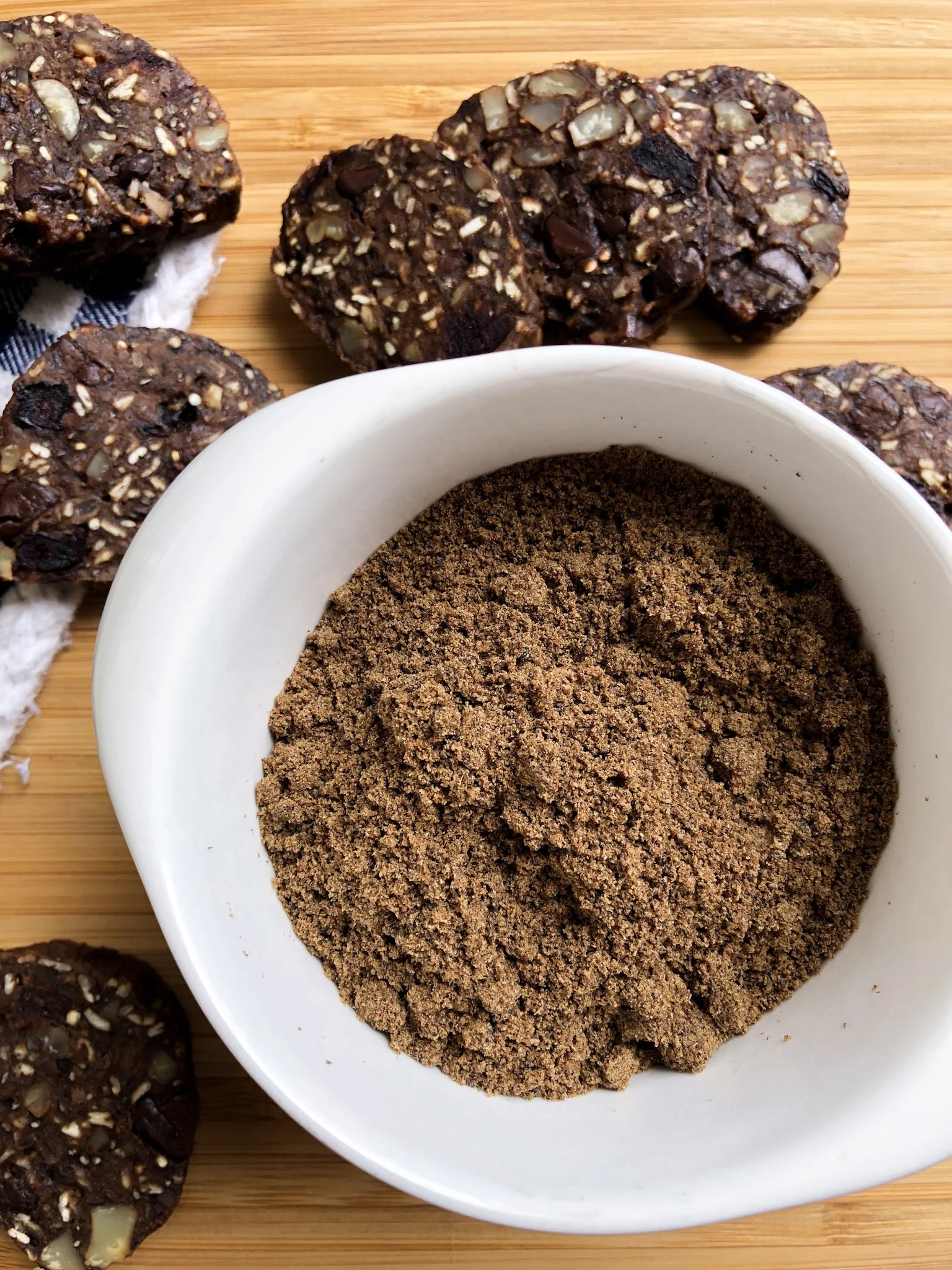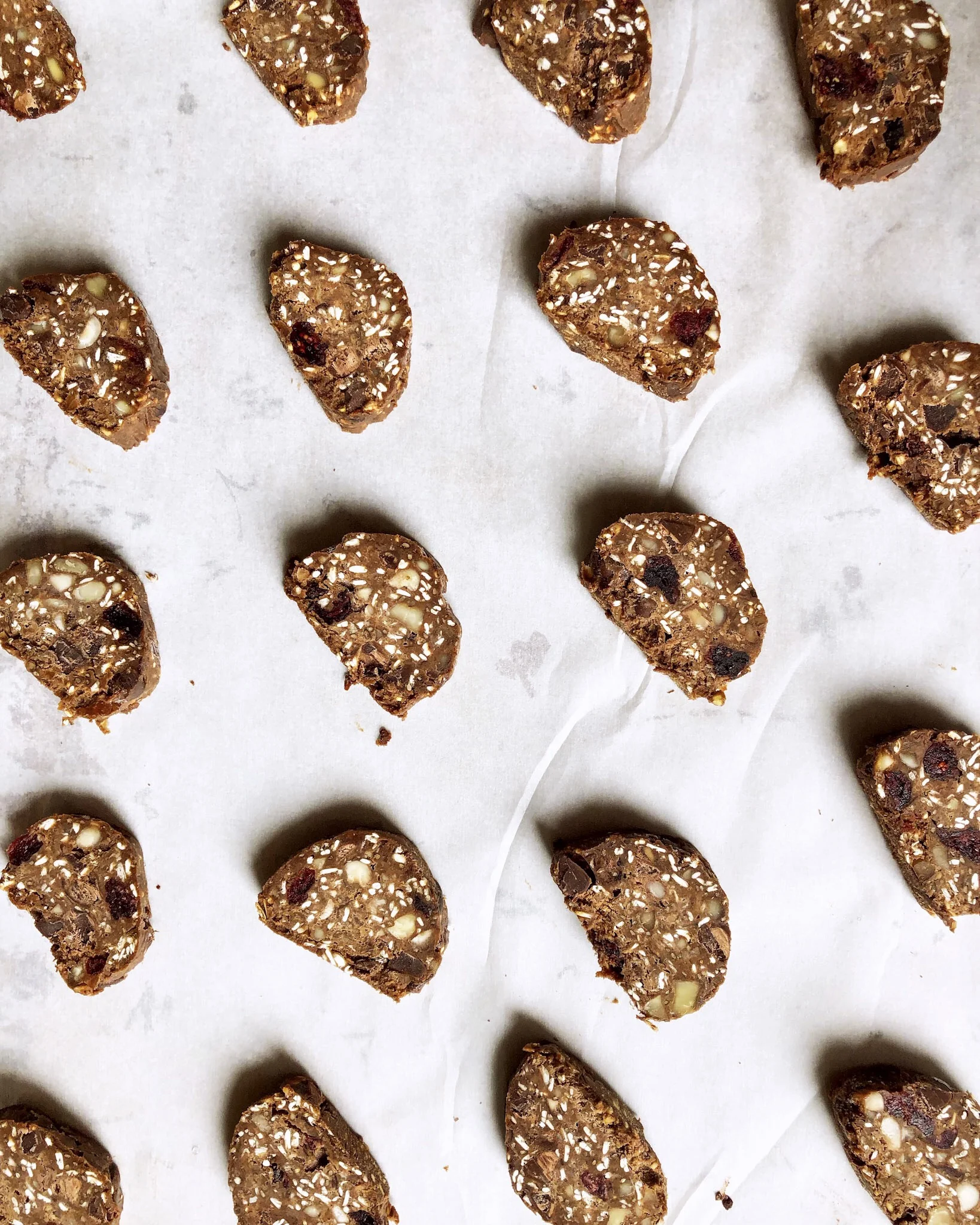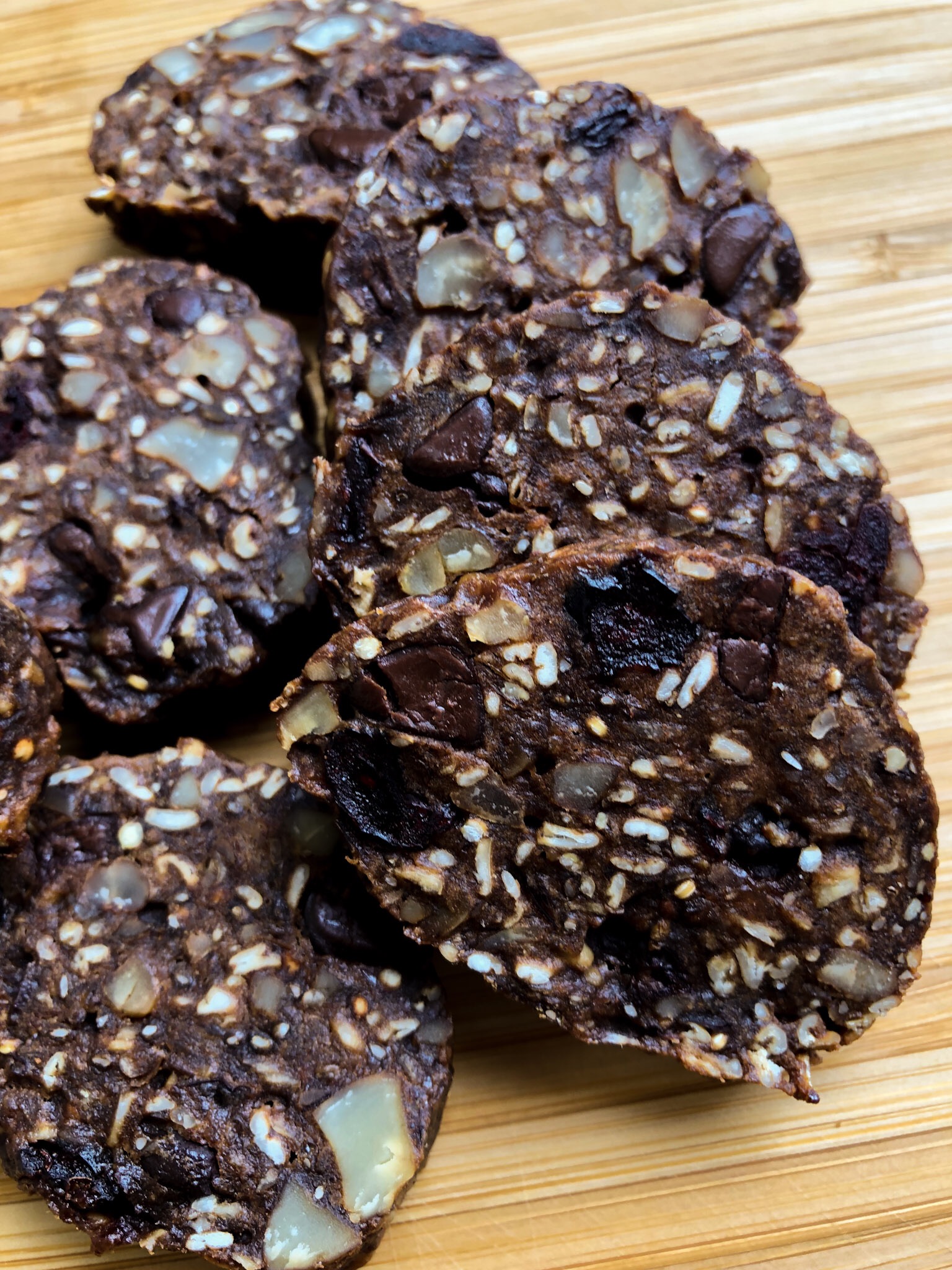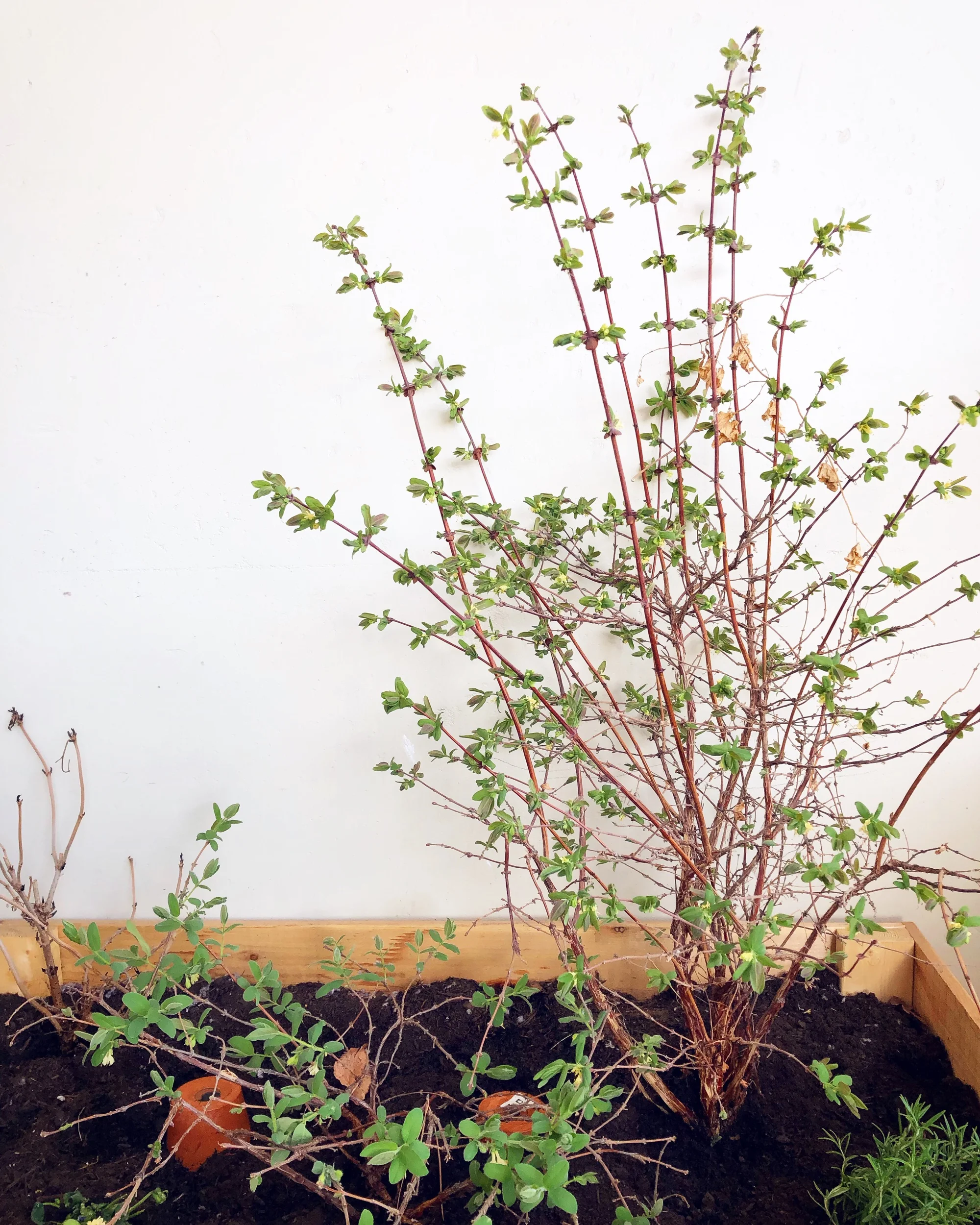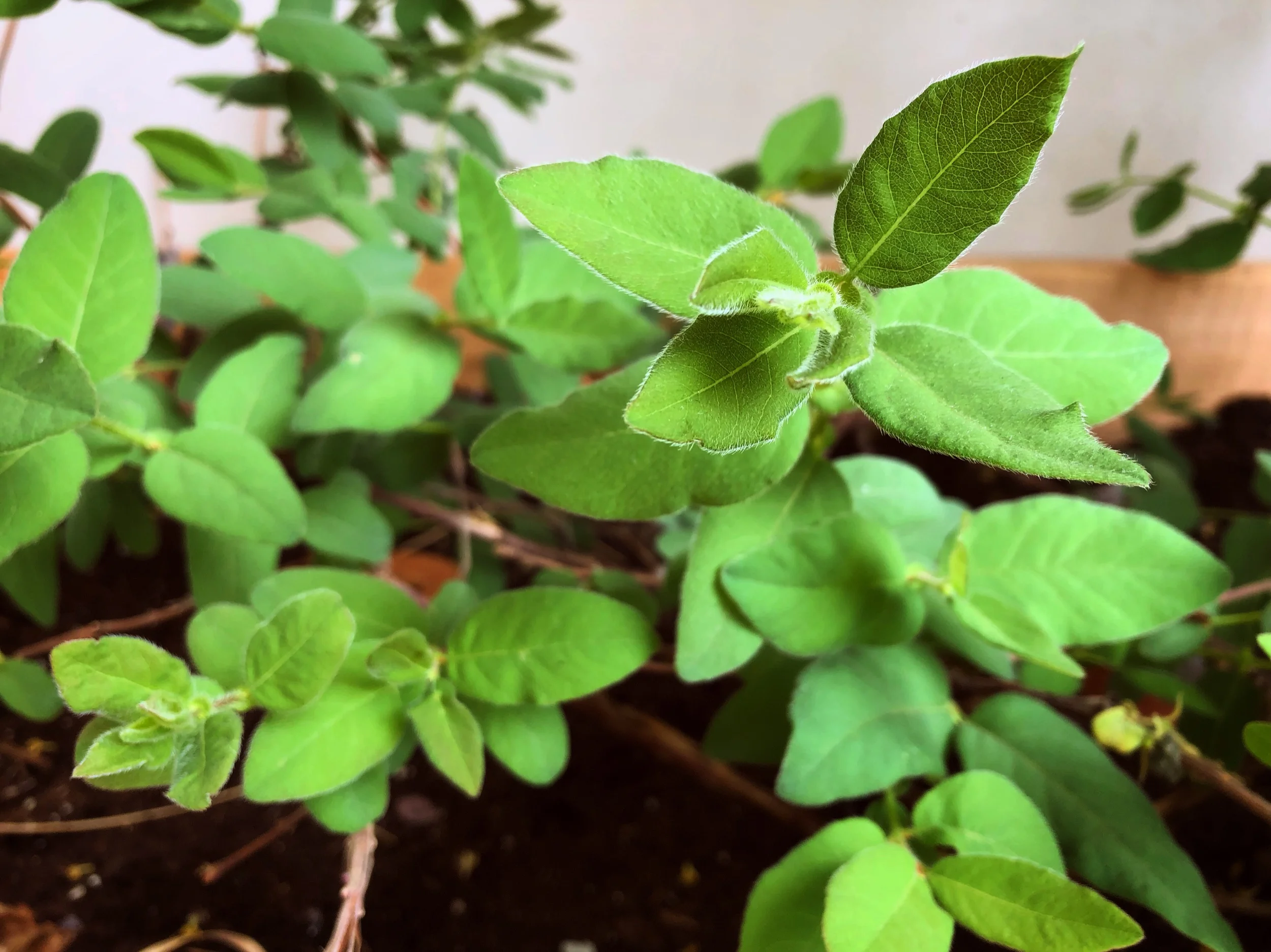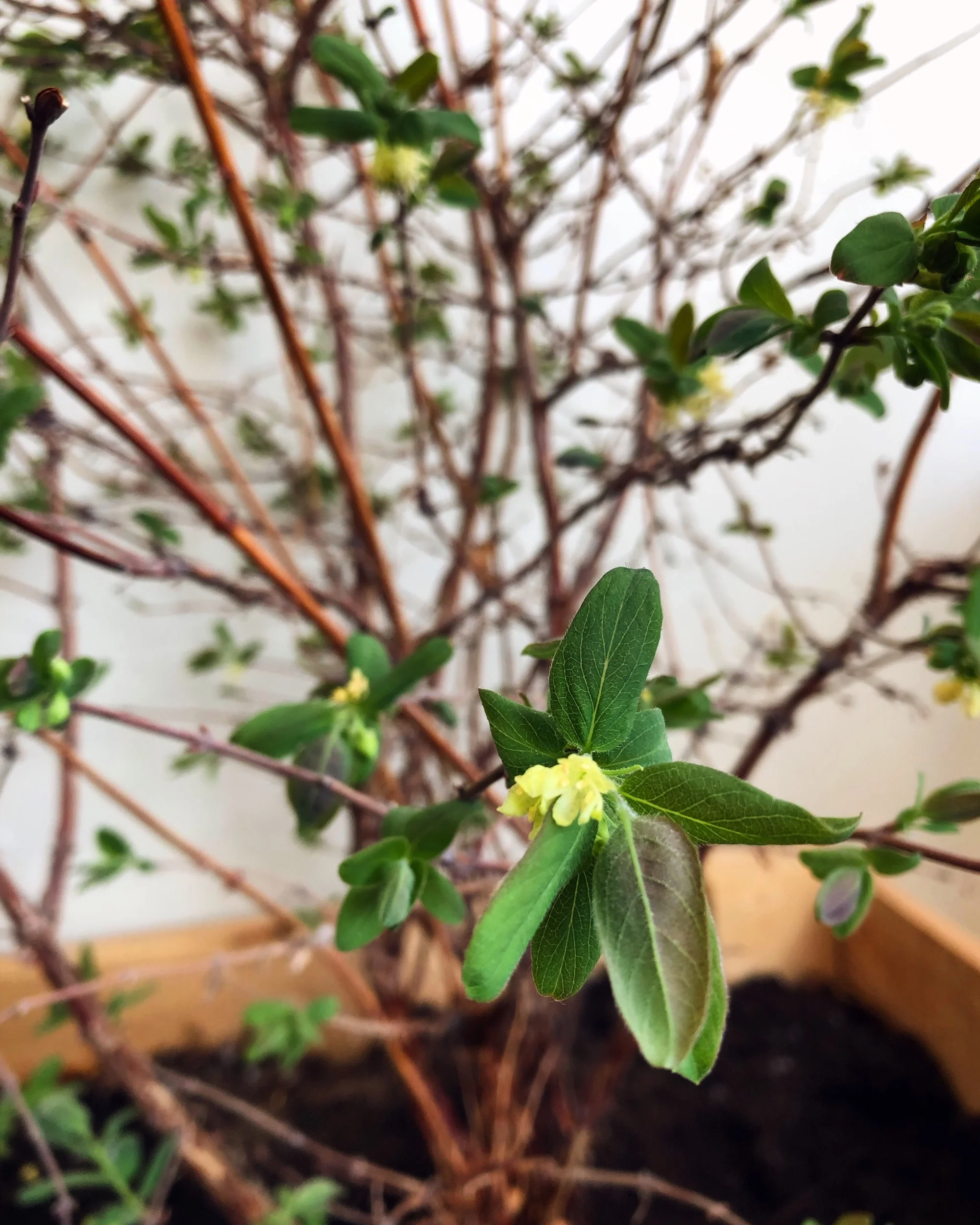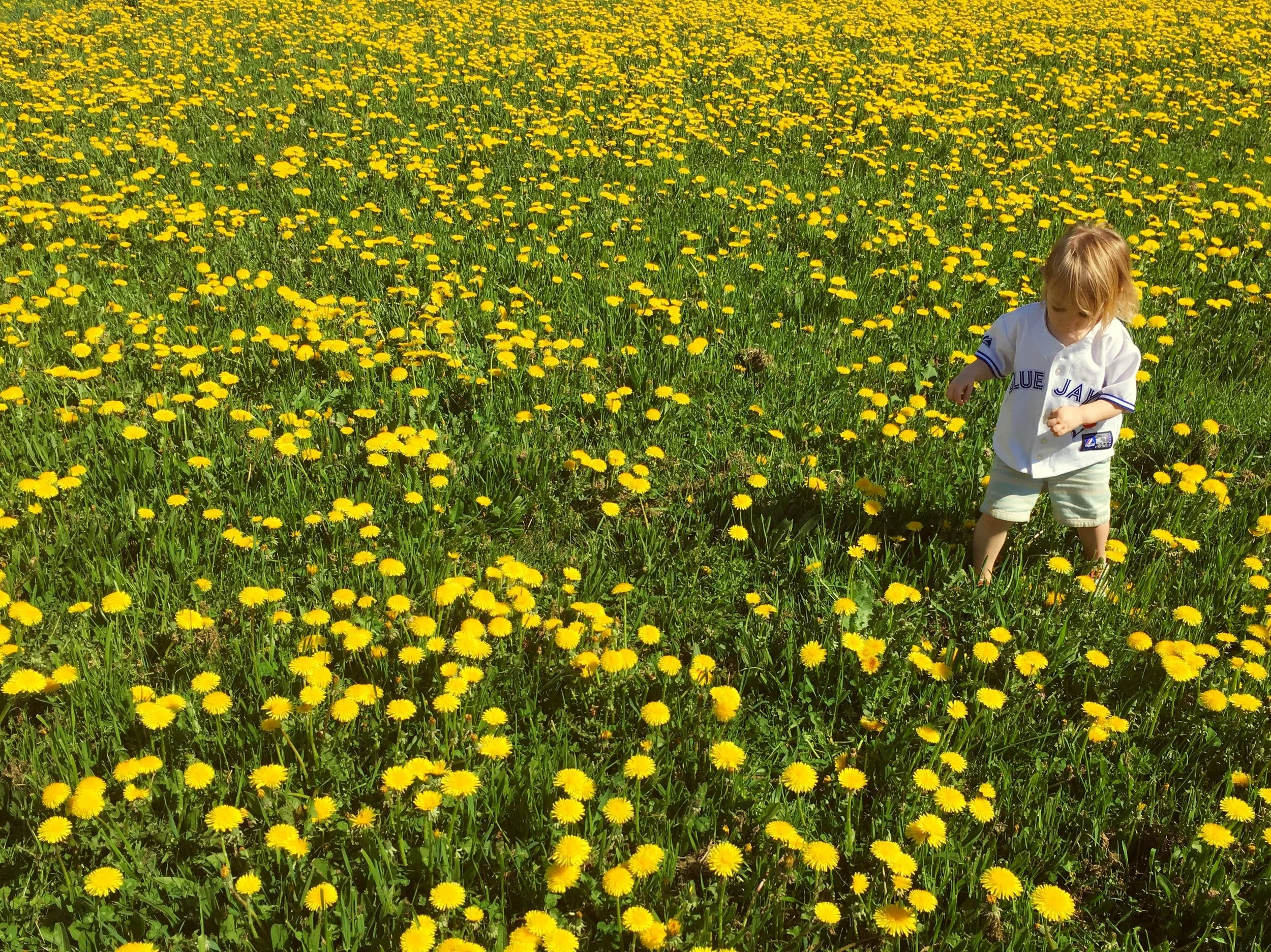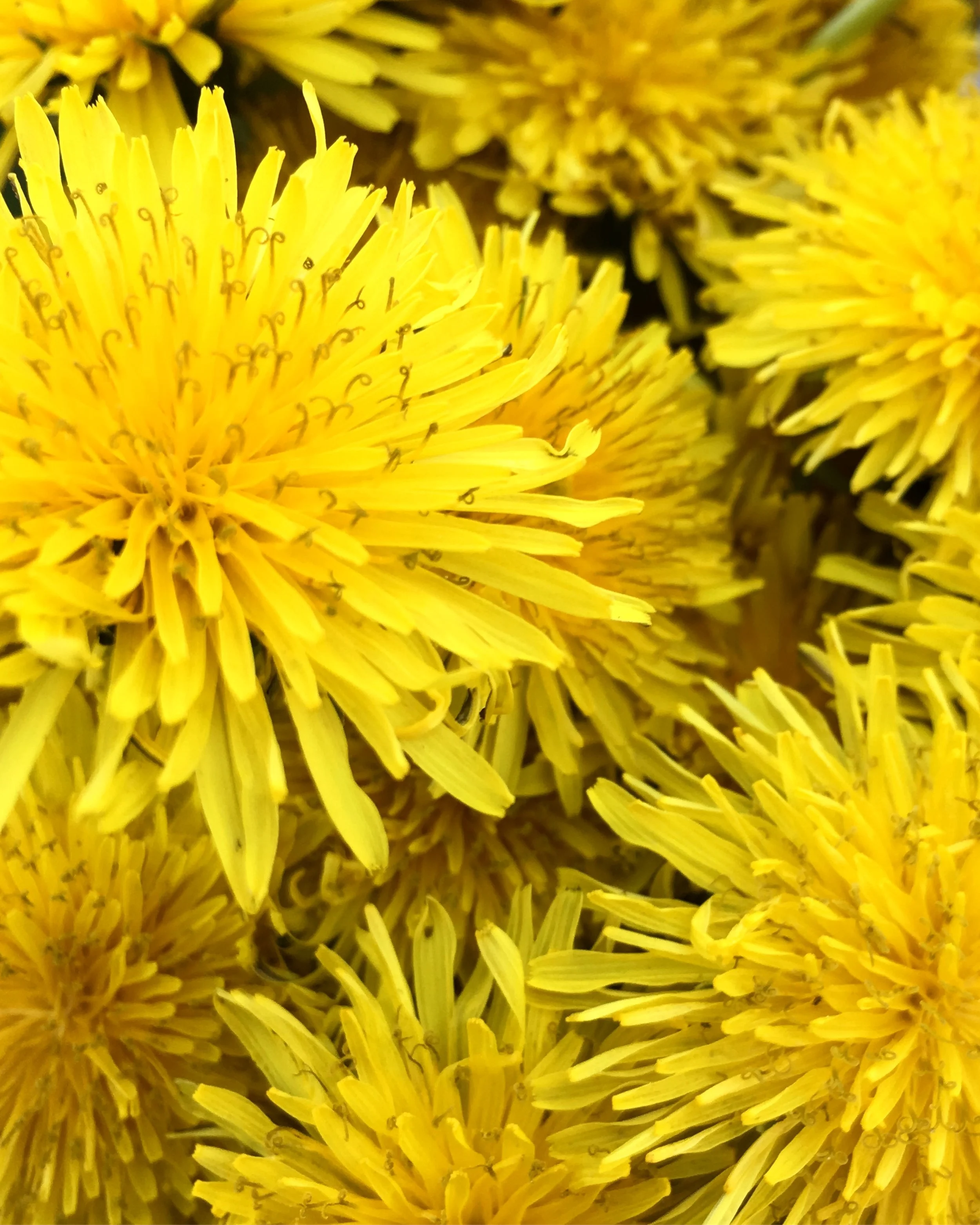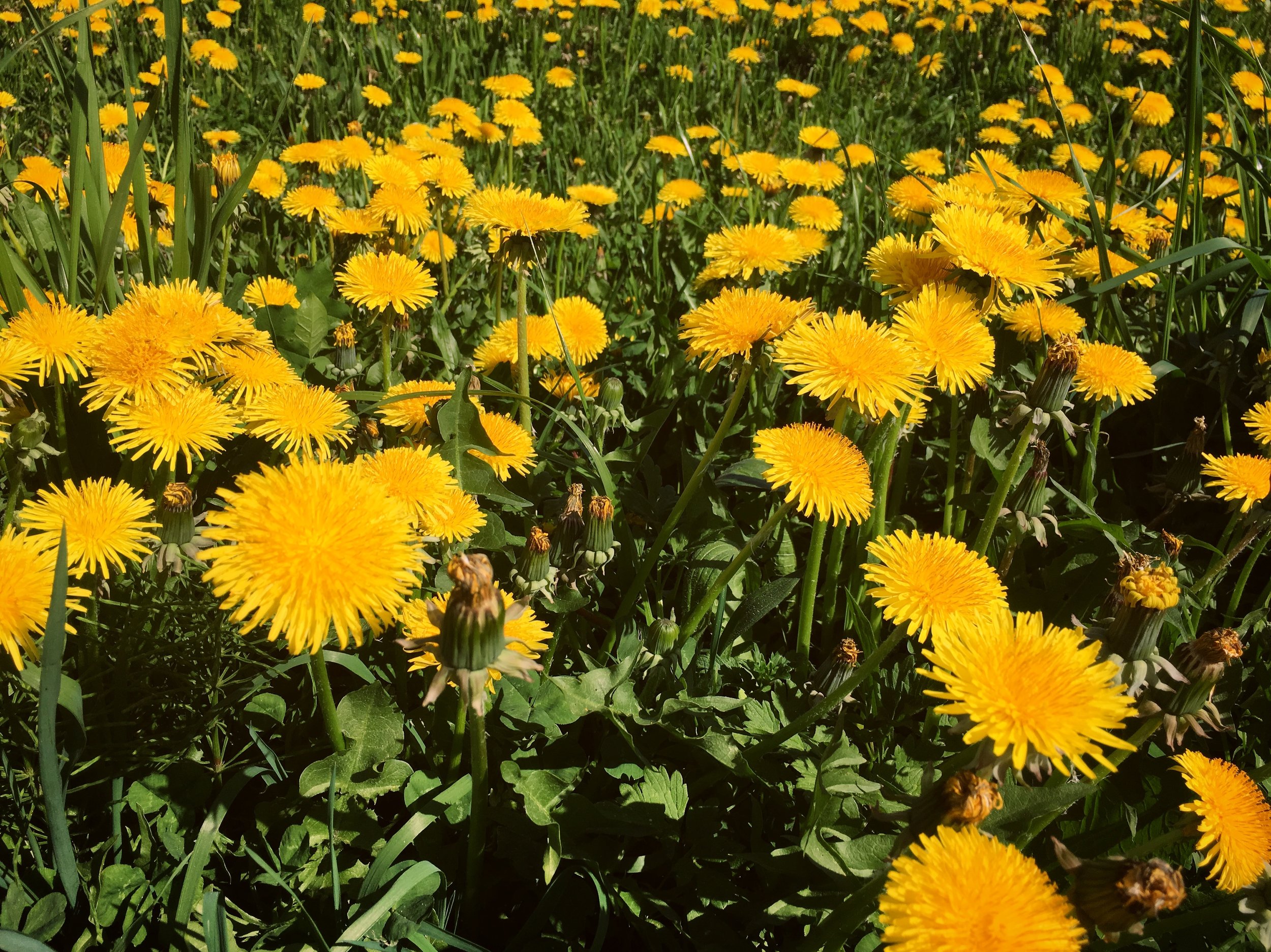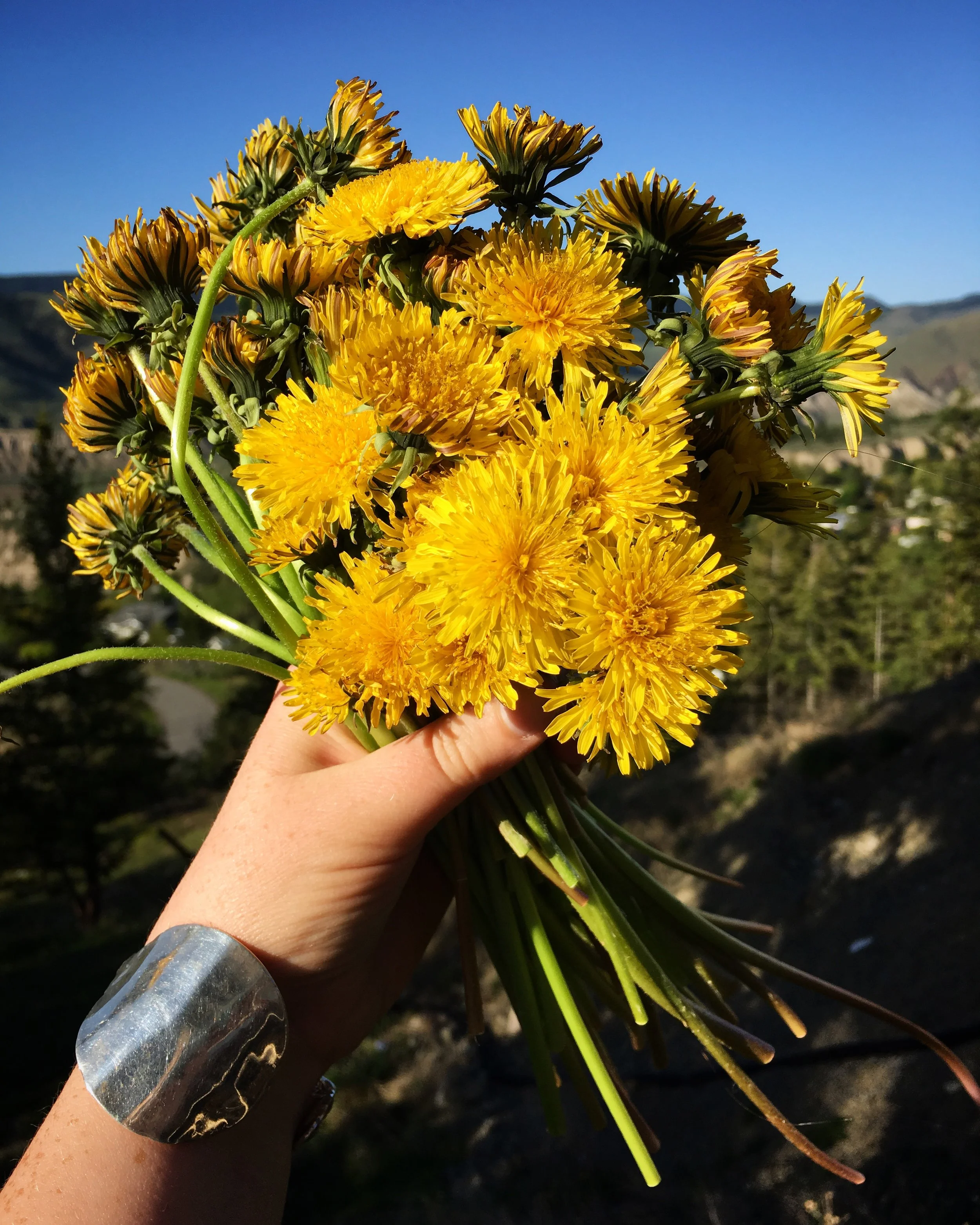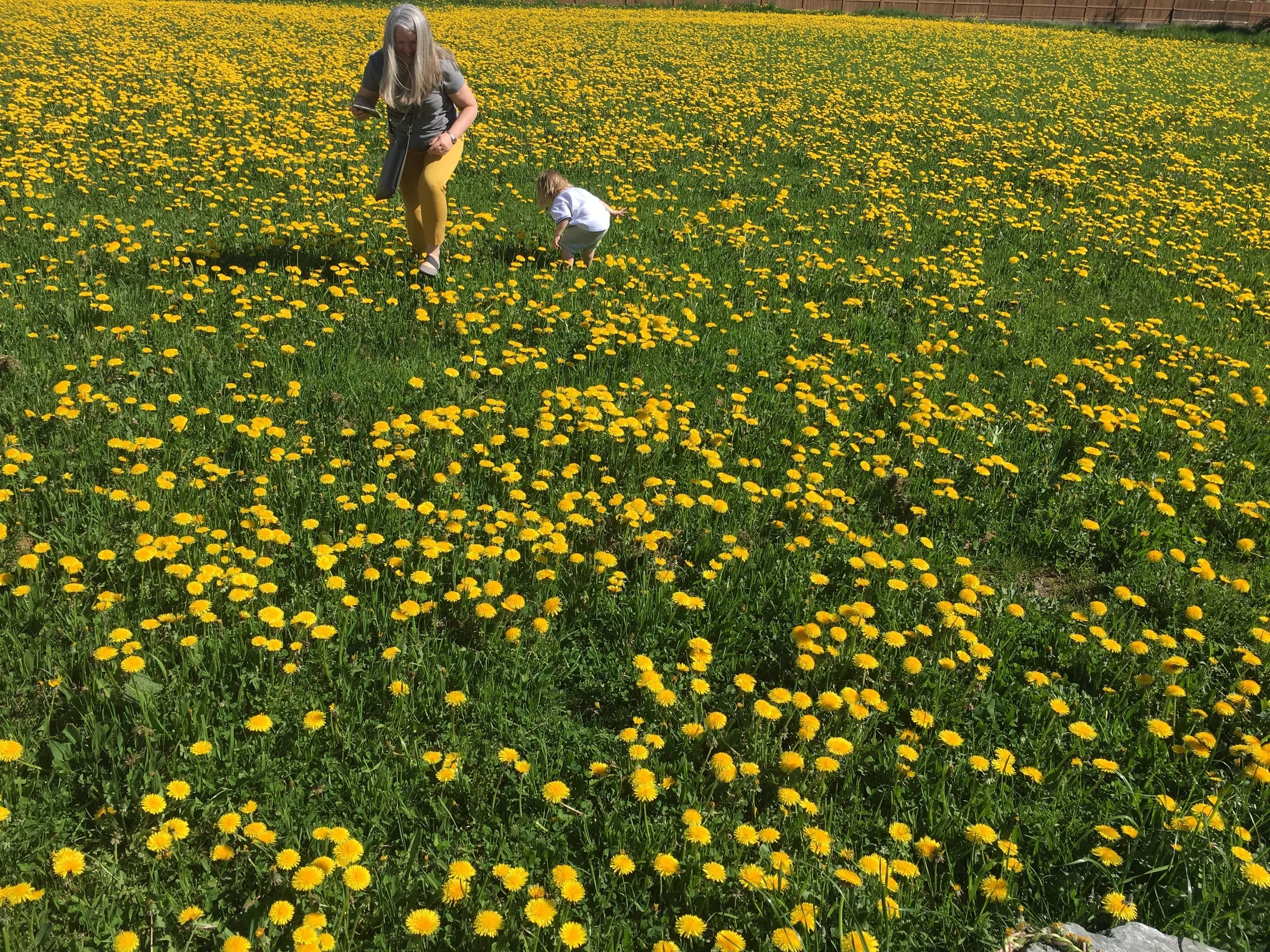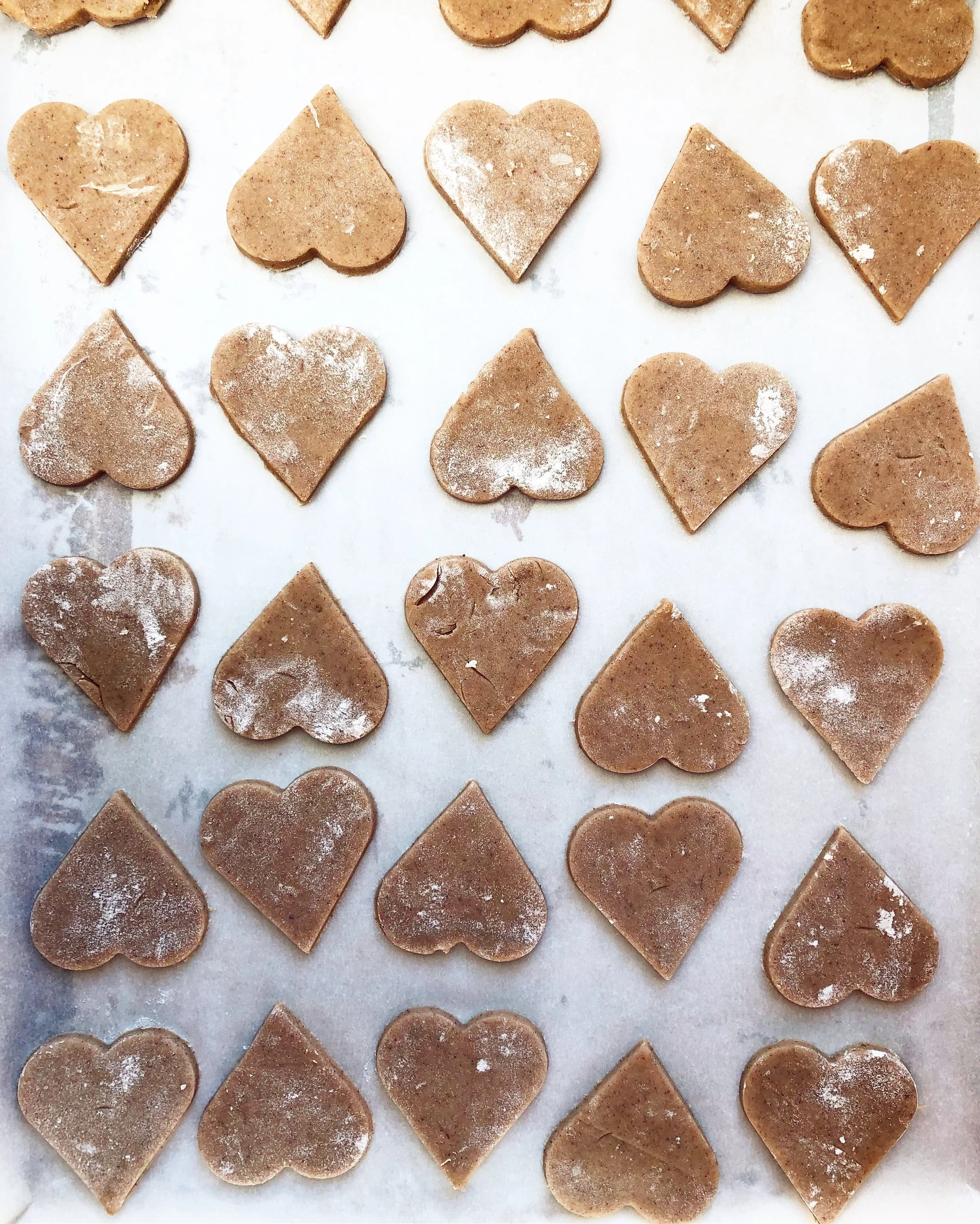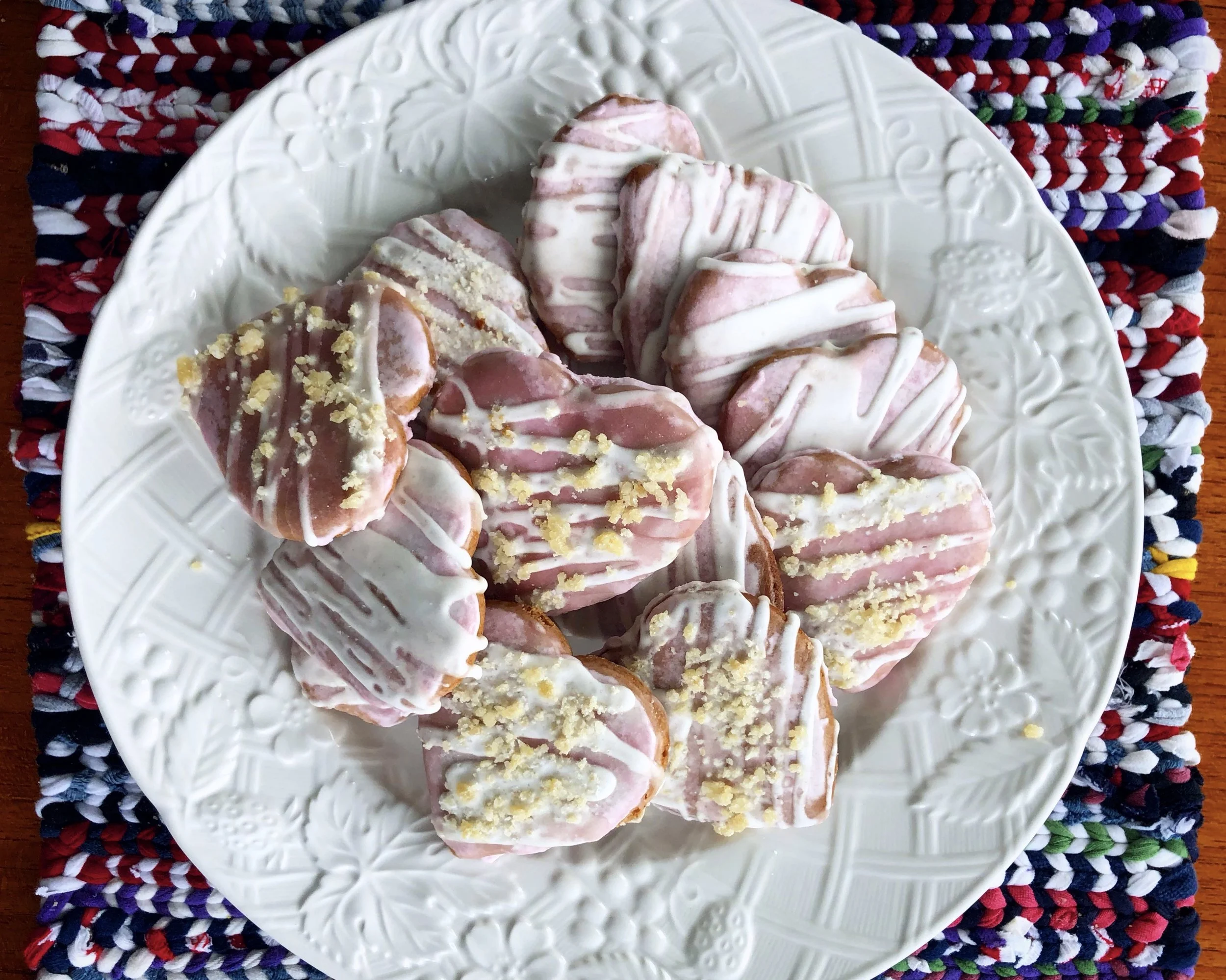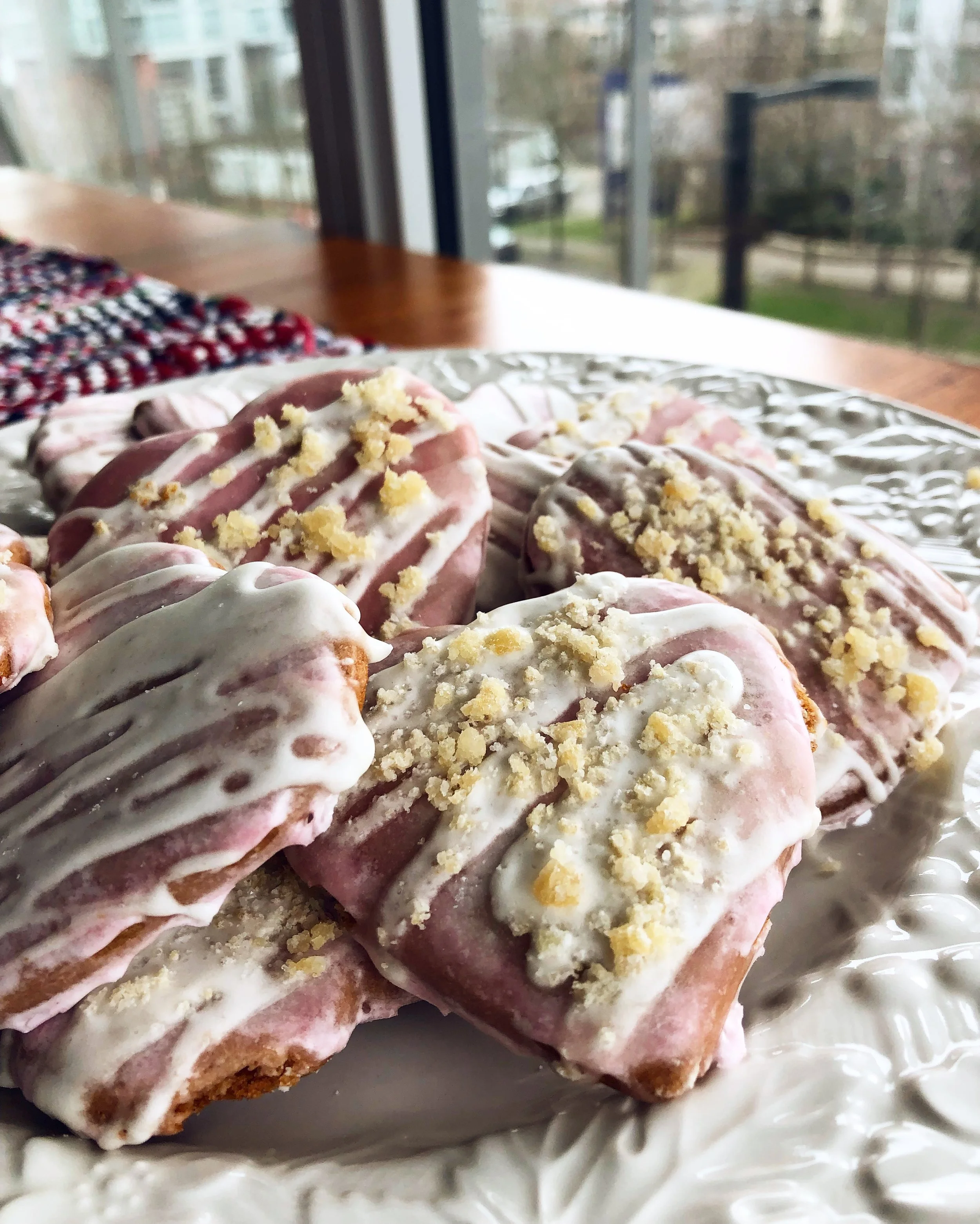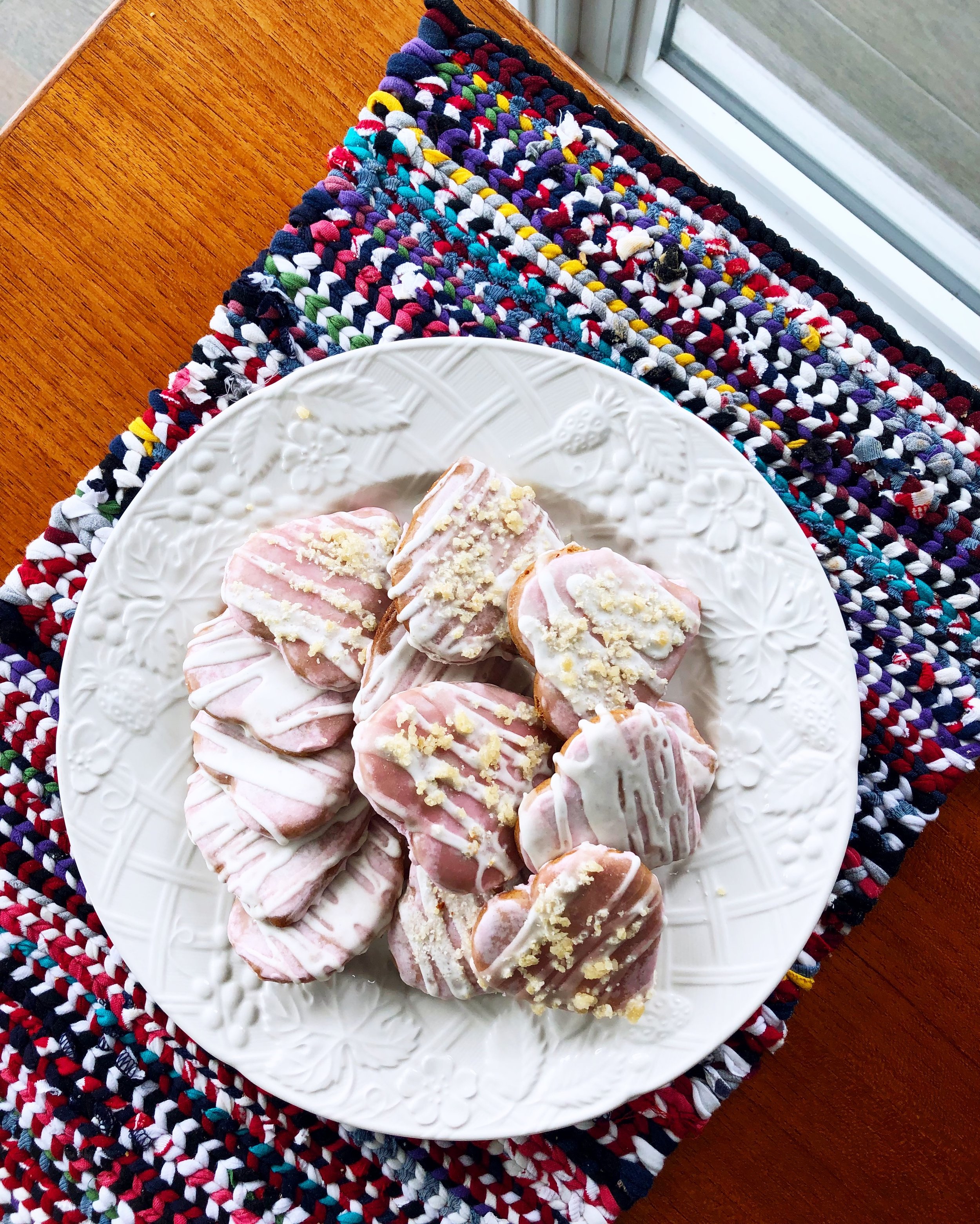Trail Mix Cookies featuring Bite Snacks Cricket Protein
Today I have a new recipe to share with you featuring Pure Cricket protein powder from Bite Snacks. At this point it probably looks like the only thing I ever do is make cookies, but as soon as I got my hands on the protein powder my mind instantly started thinking of some sort of trail mix or breakfast cookie type thing.
Crickets as a food source are gaining in popularity these days. Or perhaps I should say that the countries that don’t traditionally consume insects are finally catching on to what 80% of the world already knows - insects are too nutritious to ignore! Crickets are an excellent source of protein, and many minerals that are essential to our diet. This is all the more amazing when you consider how few resources they use up when farmed for food.
I am all for supporting my local beef ranchers, but sustainable, grass-fed beef is so expensive it is best considered a luxury food item. With this in mind, crickets can help fill our need for dietary protein without being so hard on the planet. If you want some more info, I found this page that is a great source about adding insects into the human diet. Bite Snacks also has some great info on their site.
If you’re wondering what they taste like, I think you’d be pleasantly surprised! When I tasted the powder straight to see what I might want to make with it I thought of coffee, and the bitterness of dark chocolate. There was something very savoury and roasty, as well as a very sour note in there too. So unique! For these cookies I went with all of that and combined the powder with coffee, chocolate, and dried cranberries. I can’t wait to try it out in other recipes too. I’m sure it would camouflage well in a smoothie if you were interested in the health benefits of the crickets but were a bit squeamish about eating them.
Now about these cookies. You might have noticed I have posted some fairly complicated cookie recipes here (Douglas-fir Sugar Cookies, Sumac Ginger Honey Hearts). The reason for that is I’m not interested in adding to the noise of the food blogging world. I’m not a highly trained baker, so I don’t have enough technical expertise to add anything to the question of which chocolate chip cookie is the greatest, or anything like that. With that in mind I’m also not interested in sharing a mediocre recipe. What I am experienced in is working with unique flavours, so I’ve decided to stay in my own weird lane instead of adding yet another “Best _____ ever!” recipe to the internet. If that’s what interests you too, I hope you make some of my recipes! I’d love to hear from anyone who does and would absolutely welcome feedback!
These cookies have a little bit of prep required. You’ll need to make a soaker of the nuts, chia seeds, and some of the oats the day before you make your dough. The reason I wanted to soak the nuts in these was because I was hoping for the nuts to be a part of the overall texture, not a crumbly extra. I also don’t really like eating walnuts unless they are soaked, so that was another factor.
You’ll also find some discussion - especially online in paleo focused wellness blogs - about whether or not soaking nuts and seeds make them more digestible. I’m not going to pretend to have any scientific knowledge on that count. I just like the finished result in baked goods when they are soaked better than when they aren’t.
In this recipe I have some things soaked, and some not. This was an attempt to create a variety of textures in the finished cookie. You can experiment with changing the composition of what is in the soaker. In one early experiment I added quinoa, but that didn’t really work because the quinoa was too hard still after baking, and added an unpleasant bitter flavour. Feel free to adjust this recipe to your taste! I’d love to hear what great combinations you come up with!
Part of my motivation in creating this cookie was as a sort of trail snack. These are loaded with protein, and nutrients, with a little refined sugar to help with the finished texture (needed for crispy edges) and chocolate to make them seem like a treat (just like in my favourite trail mixes). The other unexpected bonus is that my preschooler loves eating these! He’s so picky and protein has been a major challenge to get him to eat. These are perfect!
You’ll notice that the yield for these will vary and that depends on how large you shape your logs of dough. I went small because it’s easier for my son to eat. Feel free to try a larger diameter, but remember to adjust your baking time accordingly.
Trail Mix Cookies with Cricket Protien
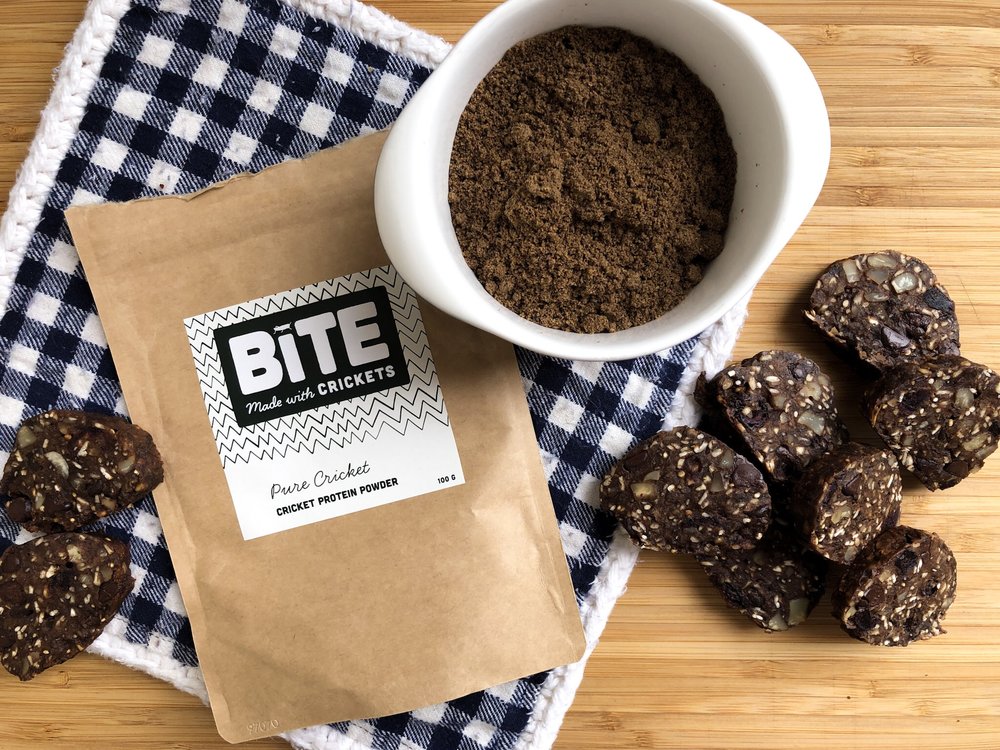
Ingredients
- 2 cups chopped, roasted nuts
- 1/2 cup chia seeds
- 1/2 cup oats
- coffee or juice for soaker
- 1 cup butter
- 1/2 cup white sugar
- 1/4 cup molasses
- 1 cup date puree
- 1 tsp vanilla extract
- 1 tsp cardamom
- 1/2 tsp nutmeg
- 1 tsp baking soda
- 1 tsp baking powder
- 3 cups flour
- 1/4 cup Bite Snacks Pure Cricket Powder
- 3 tbsp cocoa powder
- 1 tsp salt
- 1 cup chocolate chips
- 1 cup craisins
- 1 cup oats
- Optional: up to 1 cup other mix-ins like pumpkin seeds, sunflower seeds, or whatever else you like in your trail mix.
Takes , serves several dozen cookies depending on the size you make your logs.
Instructions
- The day before you want to make the cookies, prepare the soaker. Roast the nuts (spread out on a cookie sheet, roast at 350 degrees until you just start to smell them - don’t walk away! This will only be about 10 minutes). Chop the nuts, and combine with the chia seeds, and oats in a container such as a quart sized mason jar, and cover with coffee or juice. Soak overnight in the fridge.
- The next day, make your date paste by blending about 40 dates with a little bit of water in a food processor or high powered blender.
- Cream butter, sugar, molasses, and date paste until light and fluffy. You’ll want to make sure that everything is well blended, and one homogenous colour. Any sugar crystals should be dissolved. This might take a few minutes longer than you are used to with other cookies.
- Add the egg, vanilla, and spices, and continue to beat until well emulsified.
- Add soaker mixture from the fridge.
- Combine your baking soda, baking powder, and salt in a bowl with three cups of flour. Add this bit by bit, with your mixer running on the lowest setting. It is possible you will need more flour depending on how much liquid your soaker contributed to the overall mix. This will be a very wet dough. Add enough flour that it is workable, but still quite tacky. Go easy here as your oats and other dry mix-ins will absorb some of the liquid and you really don’t want to make these too dry.
- Add in craisins, chocolate chips, oats, and any other mix-ins.
- Scoop your dough onto wax paper, and form into logs. Freeze, or refrigerate until firm. When you are ready to bake preheat your oven to 350˚F. Slice the cookies to a thickness just over 1/4 inch.
- Lay cookies out on a baking sheet, and bake for 15-20 minutes.
Bite Snacks provided me with the Pure Cricket powder free of charge in exchange for this recipe and review, but all my thoughts and opinions are my own.
